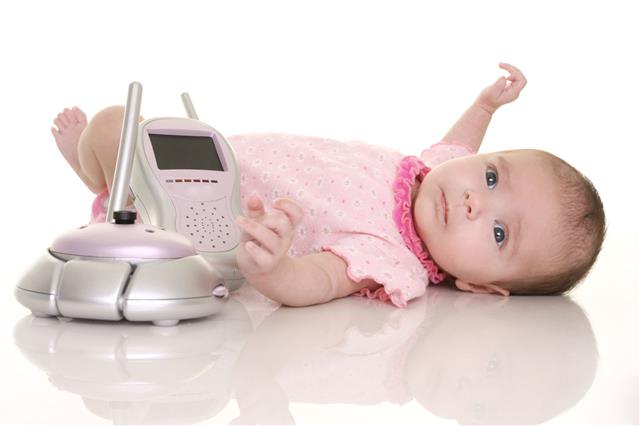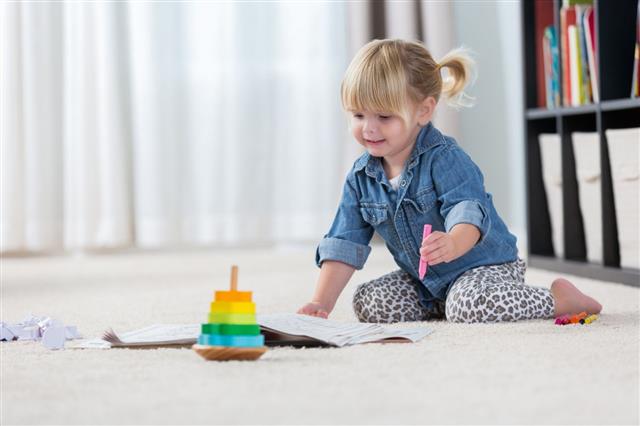
Telegraphic speech refers to the two-word stage of language development in children. AptParenting provides information and examples to help you understand telegraphic speech.
Did You Know?
At 18 months, a child has a vocabulary of approximately 5-20 words. By the time the child turns 3, the vocabulary grows to about 1,000 words.
Language and speech development starts right after birth, with the first five years being extremely crucial. During this time, the parents or the primary caretakers have a very important role to play. Parents and adults use a different type of speech while talking to infants and toddlers. This infant-directed speech, which is also referred to as motherese or parentese, is linguistically or grammatically simplified speech that is characterized by variations in the pitch (high pitch, sing-song tone). During this time, the parents talk slowly, emphasizing on certain words and repeating them.
The main objective is to catch the child’s attention and get a response from the child. As the child turns one, he begins to respond to the speech sounds from his/her native language. Before a child starts going to school, he/she has already acquired the knowledge of hundreds of words that allow him/her to communicate with others.
Stages of Language Acquisition
The stages of language acquisition in children include:
➠ Cooing
➠ Babbling
➠ First words and holophrases
➠ Telegraphic speech
➠ Making language-based sounds at 2 months, babies produce soft vowel-like (ooooo…ahhhh) vocalizations till three months. This stage is referred to as cooing.
➠ At 6 months, the child makes speech-like sounds or repetition of single syllables that have no meaning (ma-ma-ma, ba-ba-ba). This stage is referred to as babbling.
➠ Between 9-12 months, the child utters single words or holophrases (Mommy, dada, cat, ball, etc.) to express themselves. They might use the same word for many things. For example, they might refer to every animal as ‘doggie’. This is called overextension. Similarly, a child might use the word doggie for the family dog and not other dogs. This is called underextension.
➠ At 18 months, the child’s vocabulary begins to grow rapidly. Once the child’s vocabulary includes 50 words, a sudden spurt occurs. Thereafter, the vocabulary increases at a rate of 50 to 100+ words every month. Most of the words are nouns. This period is referred to as the naming explosion. A child in the age group of 18-24 months is likely to start uttering two-word sentences.
Between 2½ and 5 years, a child is able to form long sentences with grammatical morphemes (meaningful units of language).
What is Telegraphic Speech?
Newborns respond to all kinds of sounds, irrespective of the type of language. However, a one-year-old child will have a selective response to phonemes (speech sounds from the native language). By the time a child turns 2, he/she should be able to put together two-word sentences and know 50 words or more.
The term ‘telegraphic speech’ was coined by an American psycholinguist named Roger Brown in 1963. It refers to the two-word stage of language acquisition. It is derived from the word ‘telegram’. Just as unnecessary words, conjunctions, articles, etc., were omitted while sending a telegram to save money, children in the age group of 1½ to 2 years omit grammatical morphemes such as the conjunctions, prepositions, articles, possessives, connective words, etc. Their sentences or phrases usually include the main words, which might include the noun and verbs.
The child only uses the words that are relevant to meaning. Function words (a, the, in), auxiliary words (is, was, will be), and word endings (plurals, possessives, verb tenses) are omitted.
During the early stage of speech acquisition, two main classes of words that are used include pivot words (words that are used in the same place within an utterance) and open words (words that are used in different places in different utterances). Out of the two-word utterances, one word is a pivot word and the other is an open word. Psycholinguists also believe that children follow the basic order rule, wherein the sentence includes the agent, action, object, and location. If the two-word sentence includes the agent and action, the sequence of words will be agent-action, and not action-agent. The same will apply to the sentence that includes action and object.
Telegraphic Speech Examples
| Mommy go | Daddy play | No bed |
| Daddy walk | Mommy milk | Daddy car |
| Baby chair | Baby draw | Baby cold |
| Doggie bark | Birdie fly | Baby sleep |
| Baby toy | Mommy book | Doggie sleep |
| Give toy | Teddy give | All gone |
| Where ball | Mommy dress | More milk |
| Give candy | Mommy hurt | Give book |
| Not hungry | Book big | Doggie sit |
| Car go | More cookie | Baby eating |
| Go park | Toy floor | Cup table |
| Mommy shoes | Drive car | Sit chair |
There’s no denying the fact that the role of the parents is pivotal, when it comes to ensuring the normal development of a child’s language skills during all the stages of language acquisition. Speaking with the child and reading out books to him/her can be extremely beneficial. It is extremely essential to encourage the child and help him/her to learn new words and form sentences. In case, your child is unable to do so, it would be best to consult a speech language pathologist at the earliest.


























